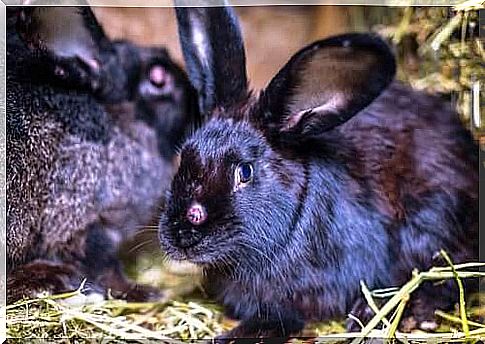Competitiveness Between Non-carnivorous Species

It is very easy for us to imagine two lions fighting each other to stay within a herd or a hyena and a vulture fighting for a piece of meat. But how does the competitiveness between non-carnivorous species work?
Competitiveness between non-carnivorous species
The concept of “competitiveness” is frequently used by biologists to refer to the existence in nature of a spirit of competition. It is present between different species, but also between individuals of the same species.

For example, in Colorado they coexist between different species of geomides ( Geomys, Crateogeomys and Thomomyss ), competing with each other for the occupation of space.
A good indicator of the rivalry between two species is given by the ability of one to occupy the geographical space of the other, when the latter is absent. This phenomenon occurs with chipmunks: specifically, with Tamias dorsalis and Tamias umbrinus .
Although the first species is considered dominant, the second can compete with it if the trees in the area are close enough.
In Kenya, two species of hare ( Lepus capensis and Lepus crawshayi ) live side by side near the Great Rift Valley. In this area, fires regularly occur which alter the habitat of both species.
This phenomenon favors the domination by L. capensis , able to move better in grassy and level spaces. However, when the bushes start growing again, the most favored species is L. crawshayi .
An example of competitiveness between non-carnivorous species: rabbits vs hares
Prior to human intervention, the European hare ( Lepus europaeus ) did not cross the Pyrenees. And the European wild rabbit ( Oryctolagus cuniculus ) lived on the Iberian Peninsula only with the Iberian hare ( Lepus granatensis ).
Over the years, however, an overlap has developed between the European hare and the rabbit, which have extended their presence to almost all of Europe, South America and Oceania. On all continents, hares occupy a much larger territory than that inhabited by rabbits, except in Australia.
In some way, there is an allopatric speciation between these two species: each of them prefers a certain type of habitat. On the one hand, the rabbit prefers sandy and clayey soils, coniferous forests and pastures. On the other hand, the hare prefers cultivated lands, cereal fields, dunes and wooded clearings.
There has always been a widespread belief among rural dwellers that hares and rabbits avoid each other. This phenomenon may be due to the fact that rabbits, when they exceed the number of hares, chase and hunt them until they are exhausted.
This is one of the reasons why the rabbit is believed to outperform the hare in Australia. Despite the rumors, however, in the rest of the continents it is possible to perfectly observe both species grazing on the same land.
What is the reason, then, that the greater the number of rabbits, the smaller the number of hares and vice versa?
Myxomatosis
The death of numerous rabbits due to this disease, in Europe in the 1950s, can represent a real experiment. To such an extent that it has been possible to demonstrate that in various countries, when the number of rabbits decreases, the number of hares increases.
This phenomenon can only occur if both species are naturally competing with each other.

Behavior
The antagonism between hares and rabbits has always been the subject of observation, both in captivity and within their natural environment. Over the centuries, numerous cases of rabbit attacks on hares have been reported.
However, it was also possible to observe these two species sharing the same territory and eating without disturbing each other.
Studies show that there is normally no aggressive behavior between the two species. In general, hares do not flee in the face of rabbit attacks. They do not even avoid the territories occupied by them or, in general, the rabbits themselves.
In other words, there is no reason for direct competition to occur. Simply, some eat in one part of the territory, while the others in a different one.
Common diseases
Cases of diseases have been described which, although exclusive to rabbits, are also fatal in hares. And viceversa. For example, the Graphidium strigosum parasite originally made rabbits sick.
It was discovered, however, that when a hare entered a territory occupied by infected rabbits, she too fell ill.
Competitiveness between non-carnivorous species: conclusion
The European hare and rabbit have become sympathizers for a relatively short period of time. One of the explanations offered for their originally competitive behavior consists in the fact that the two species found themselves immersed in a process of adaptation to coexistence.
Since their diets are similar, experience tells us that they are perfectly able to live together, as long as they feed in different areas. In the absence of one, however, the other is effectively destined to take the place of the first.









